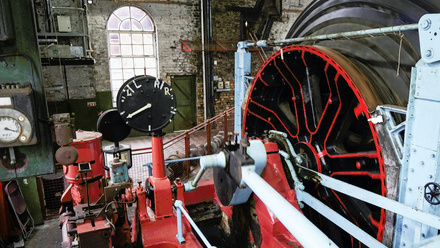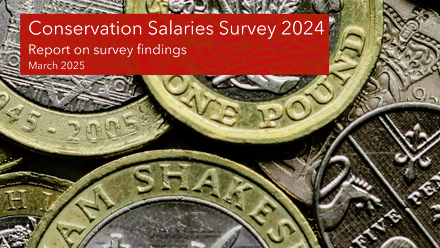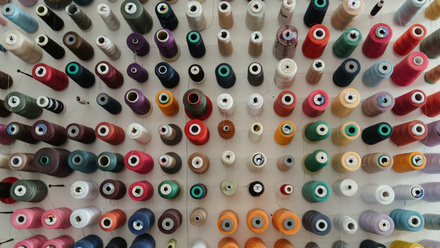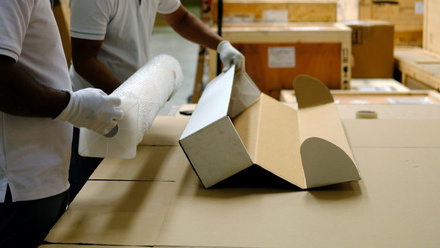This conference marked the 5th Interim Meeting of ICOM-CC Glass and Ceramics, and the 34th year of dedicated events from Icon’s Ceramics and Glass Group. Held at the British Museum, the joint conference gathered an impressive group of professionals specializing in the field of ceramics and glass conservation at a prestigious location in the heart of London. With site visits, papers and meetings spanning four days, the conference was an exciting professional event and a wonderful opportunity to network and socialise.
The program of visits arranged for 4th September was versatile and extensive. They included The Wallace Collection, the V&A Glass and Ceramics Galleries, Fenton House, Leighton House, a walking tour of stores that sell quality conservation products (Cornelissen, Russell & Chapple, and Tiranti), the Museum of London Archaeological Archive, the British Museum Ceramics, Glass, Metals, and Stone Conservation Studios, the Contemporary Ceramics Centre, and the British Museum Islamic Galleries. Ceramics conservator Ros Hodges comments on her chosen venues and offers her thoughts on a few talks.
“The first visit was Leighton House, former home to the Victorian artist Frederic, Lord Leighton. A purpose-built home and artist studio cleverly constructed to make the most of the light and to enable enormous canvasses to be moved in and out which I found stunning.
Inside we looked at the architecture and paintings, but the subjects that interested me most were the fantastic ceramics: a mesmerizing collection of modern Persian ceramics produced in recent times to replicate what would have been seen in Lord Leighton’s time, next to showcases with original dishes and plates. The piece de resistance was the stunning tiled Arab Hall which is a delight to the senses of any ceramic conservator, featuring original near eastern tiles along with those produced by William De Morgan commissioned to bridge the gaps and tie the hall and the stairwell together.
Next, at the British Museum, we had the privilege to be behind the scenes into the new Conservation Centre. What a fantastic space! So well planned with specific rooms for specialized tasks and super structures for the safe moving of large stone objects downstairs. The biggest improvement on their former quarters was abundant natural light and good artificial provision too.
The final visit was to The Contemporary Ceramics Centre, handily situated opposite the BM. I had never been there and it made a wonderful contrast to my usual historic ceramic subjects, the materials being generally more robust with glazes being used for decorative effect much more than enamels and gilding. This was a great showcase of modern ceramics which proves that the craft is alive and well and full of innovation and promise – their works are after all the artefacts of the future that we will be required to curate and conserve.”
On the first day of talks, after introductory remarks by Sandra Smith ACR, Head of Collection Care at the British Museum, the earliest session kicked off with a focus on technical art history. Wendy Meulebroeck of Vrije Universiteit Brussel and Valérie Montens from the Royal Museums of Art and History in Brussels presented the rationale and initial findings of the FENESTRA project, which focuses on the investigation and conservation of flat glass collections from the RMAH. Marian Schüch of the State Academy of Art and Design in Stuttgart then wowed the audience with his reconstructions of spiral-crack-glasses. He discussed outcomes of testing several historic ‘recipes’ for producing the crack and then demonstrated the flexibility of the novel glasses with a video, which elicited excited gasps from the audience. Rachel Sabino concluded the session with an overview of how the Art Institute of Chicago utilised medical computed tomography (CT) scanning to aid in the authentication of a group of West African ceramic figurines, demonstrating the importance of cross-disciplinary collaboration for conservators.
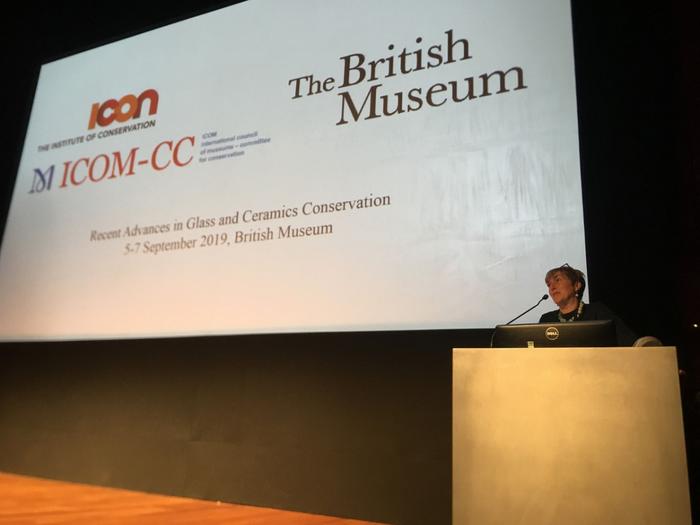
The day continued with a session on glass deterioration and vulnerability. Teresa Palomar of the Universidade Nova de Lisboa discussed how infrared thermography can be used to track the heating and cooling of stained glass windows exposed to direct sunlight and to assess the efficacy of external protective glazing. With a beautiful 19th-century glass flute as an example, Lynn Brostoff from the Library of Congress emphasised the importance of utilising multiple tools to characterise glass surface alteration layers, which, in turn, allows for thorough assessment of the condition of historical glass and informs preservation strategies. Drawing on his joint research at the Rijksmuseum, the University of Texas at Dallas and the Corning Museum of Glass, Guus Verhaar gave an overview of the use of laser ablation-inductively coupled plasma-mass spectroscopy and ion chromatography to investigate ion depletion in unstable historic glass.
This was followed by a session on polychrome ceramic objects. With the scheduled presenter unable to attend, Rong Bo of the Terracotta Army Museum kindly stepped up to deliver a presentation on the polychrome lacquer layers that once covered the famous terracotta warriors and the work his team is doing to develop methods of preserving this fragile pigmentation from disintegrating post-excavation. Duygu Camurcuoglu and Lucia Pereira-Pardo from the British Museum described their innovative use of Er:YAG lasers to clean biological growth from a large collection of Cypriot ceramic figurines. The treatment was highly successful, with the selective laser cleaning enabling efficient removal of the disfiguring marks without disturbing the polychrome layer beneath.
“The conference was full of technically interesting papers and served to showcase the large range of testing and scientific research, which is taking place in institutions around the world. Although as a private conservator much of the equipment used would not be economically accessible, it is useful to know who might be able to help and where the equipment is should this course of action be needed.”
The BM’s team project was awarded the prestigious Nigel Williams Prize. The Prize is the result of the collaboration between Nigel Williams generous family members and Icon’s CGG. This biannual prize is bestowed to an outstanding conservation project of ceramic, glass or other related material. Nigel’s former partner, Myrtle Mitford, and prize co-ordinator, Tiago Oliveira, welcomed the winners on stage to a round of deserved applause. The Student Prize was presented to Holly Daws for her thoroughly presented project on the conservation treatment of a pair of plaster frizzes, with the aim to stabilize the panels and improve the overall appearance to allow for redisplay. The day ended with a welcoming drinks reception at the museum.
The second day focused on treatment methods and materials. Firstly, Thea Schuck presented her investigation into the use of Paraloid barrier layers for epoxy resin bonds on glass objects, which she confirmed as a simple but effective method to increase reversibility. With a retrospective view, Norman Tennent evaluated the application of FTIR-ATR spectroscopy to characterise polymer fills from past conservation treatments. He emphasised the importance of identifying small formulation differences in commercially available products and advocated for the establishment of a comprehensive database of spectra for such materials. Drawing on the treatment of a large 16th-century glass vessel at the Metropolitan Museum of Art, Rebecca Gridley discussed how to adapt vacuum-formed PVC to create double-walled moulds, which allowed her to cast a large detachable fill and avoid damaging the object’s original gilded surface. Roy van der Wielen from the University of Amsterdam offered exciting insight into the viability of thermocasting B-72 in silicone moulds, which can circumvent the problems of shrinkage and bubble formation.
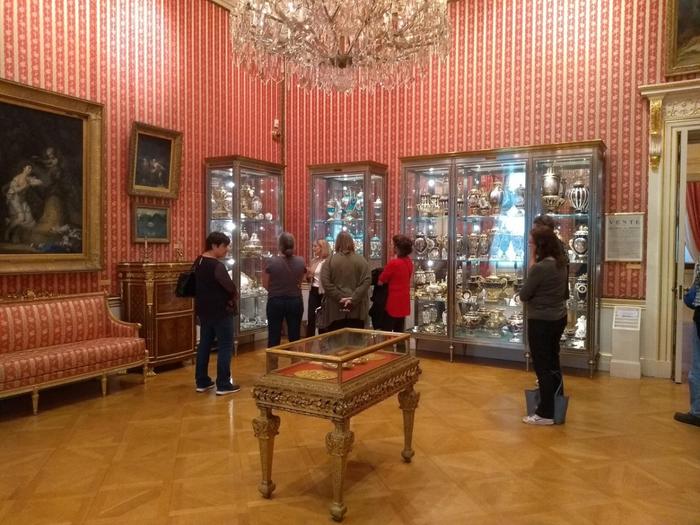
There were also a number of excellent presentations by current and recent students specialising in the conservation of ceramics and glass. Emily Thomas encouraged greater consideration of how Biotex stain removing powder may potentially affect ceramic surfaces and Cassia Balogh presented a thorough technical investigation of an Attic skyphos. The session then shifted focus to the application of computer technologies to conservation treatments, with Lien Acke examining the use of computer-aided design in creating a digital ‘toolbox’ to assist with modelling of fills on ceramic objects and Erato Kartaki presenting the preliminary stages of her research into utilising additive manufacturing technology to aid aesthetic restoration of losses. With a sticky situation on their hands, Zoë Bedford and Julia Wagner described the complexities of recreating historic adhesives used for the repair of ceramics from traditional recipes, which was further complicated by having to utilise modern ingredients. Ângela Santos then showcased her investigation of a collection of hand-painted magic lantern slides, focussing on characterisation of the glass and delicate painting materials with a range of analytical techniques. Inês Coutinho wrapped up the student session with an overview of initial research into Portuguese Renaissance millefiori glass, presenting on behalf of Francisca Pulido Valente. It was great to see so many emerging conservators confidently presenting their research.
After a full day of technical papers, the conference dinner at a beautiful Grade I listed building on Pall Mall offered attendees the chance to relax and socialise.
The third and final day saw a morning of meetings by ICON and ICOM-CC specialist Ceramic and Glass groups’ members and an exciting and varied poster session. There were nearly 40 posters displayed throughout the event, from established and emerging conservators, researchers and students from all over the world.
The afternoon began with a session dedicated to salts in ceramics. Gerhard Eggert, from Stuttgart’s State Academy of Art and Design kicked off with a lively talk about magnesium efflorescence on ceramics discussing at length their potential sources. Madeline Hagerman, from Winterthur Museum & Library, covered the conservation of tiles with two differing treatment options for two Delft tiles fireplaces, which proved that as so often in in-situ cases no one solution fits the bill and the conservator has to be adaptive and innovative whilst keeping best practice in mind. This paper was followed by Tiago Oliveira and Inês Feliciano’s paper, which illustrated this principle in the non-aqueous conservation of a beautiful ornate late renaissance tiled stove, where conservation took place in the public arena.
The last session delved into the specifics of conserving glazed bodies. Corinna de Regt explained how different production techniques influenced the depth of consolidation of Egyptian faience, whilst Bert-Jan Bass and Luc Megens from the Cultural Heritage Agency of the Netherlands, highlighted several uranium glazes used by Dutch manufacturers in the early 20th century, a subject that is rarely discussed, alerting to a source of radiation.
“The conference was characterized by the lively and enthusiastic discussions held during the breaks amongst conservators from all corners of the globe. The atmosphere was buzzing and friendly, and many contacts were made with diverse groups and individuals.
The organizing Committee are to be congratulated on putting together a meeting that appealed to conservators from the highly scientific to the very practical which was friendly and informative.”
Amy Walsh, ceramics conservation graduate (West Dean College)
Tiago Oliveira, Icon Ceramic and Glass Group co-Chair
Ros Hodges, private ceramics conservator

